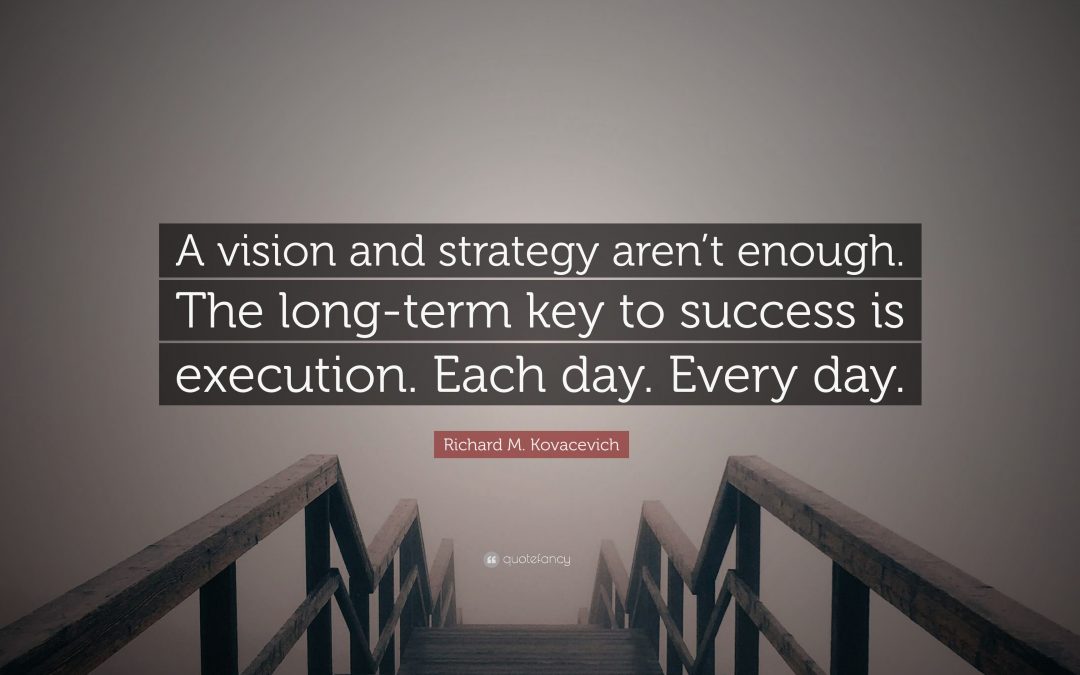Over the last decades, the advancements in technology have changed our lives most definitively one can imagine. As a result, knowledge and information are democratised. The best teachers, doctors, scientists and experts in any field of work are now accessible to anyone curious. Insights and execution are the only two factors that separate the ordinary from the great.
Thomas Edison had said, vision without execution is hallucination. And many leaders in our contemporary times have concurred that execution makes the difference. Peter Drucker captures this beautifully in a short, yet immensely powerful sentence, “Strategy is a commodity, execution is an art.”
What’s more critical: Thinking or Doing?
A competitive sportsperson knows all the strategies and techniques; also, is aware of when to deploy which one of them. Similarly, most leaders know about the opportunities; they are fully aware of the levers at their hands to seize upon the opportunities and maximize the results in their favour. Yet, we do not see every game to end up as a draw; neither do we see every company in the same industry sector creating the same value for their stakeholders. Why is this?
The difference has to be in the timeliness of applying those tactics, the consistency and the synchronisation among various forces in play to produce harmony. All of these are in the domain of doing, aren’t they?
How good have we been in doing?
In the ’90s, most organisations in India did not have emails for each employee. Communication was largely through mails and fax messages. Only the senior people could access phone calls and telex. In the late ’90s, mobile phones were a status symbol and the prized possession of CXOs. In today’s context, it seems like the stone age.
As we fast forward to recent times, smartphones and human beings are inseparable. We are obsessed with checking emails, messages and notifications in the name of multi-tasking. In most of our communities, the norm around communication etiquette has evolved. Most people expect their message, social media posts and unanswered phone calls to be responded to within a certain time limit. Nowadays it is impolite to delay in responding to messages, emails and notifications like it was to get late for a meeting.
Gone are the days when mail was getting distributed once or twice a day! Given this context, all of us are under tremendous pressure to stay connected and respond quickly. Many a time, we are immersed in volumes of messages and notifications. Every situation is not a crisis that demands attention and response; yet, our society and community at work have pushed us to consume tonnes of incoming communication and respond to them. This causes tremendous distraction, erects hurdles on the way and draws us to negotiate those hurdles on the course. Do we need to work this way? Won’t we be more effective if we focused on one thing at a time?
Some thoughts for doing better!
We can use AI-powered assistants to deal with the electronic invasion that has been defocusing us regularly and dissuading us from staying focused. Probably such high calibre AI-assistants are not yet available and hence, until then, we have to proactively establish new practices that will bring more focus and cut out the clutter.
Secondly, we need a culture of execution in our organisation. I like a statement by Morris Chang, Founder and Chairman of Taiwan Semiconductor Manufacturing Company. He said, “Without execution, strategy is useless.” Leaders have to resist the temptation of being enamoured by various opportunities; they need to steady their minds and thoughts, define clear paths and milestones, measure the progress each day, celebrate those successes and make course corrections. Leaders have to empower others and create an environment for everyone to keep pursuing the mission without breaching the guide rails; they have to pay attention to details.
Someone has rightly said, “A vision and strategy aren’t enough. The long-term key to success is execution – each day, every day!”


